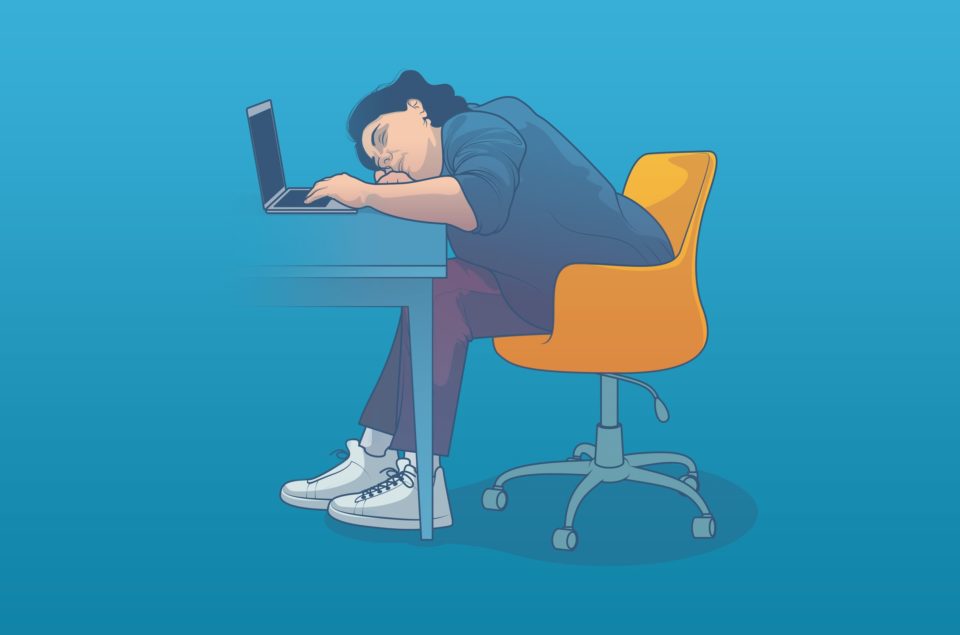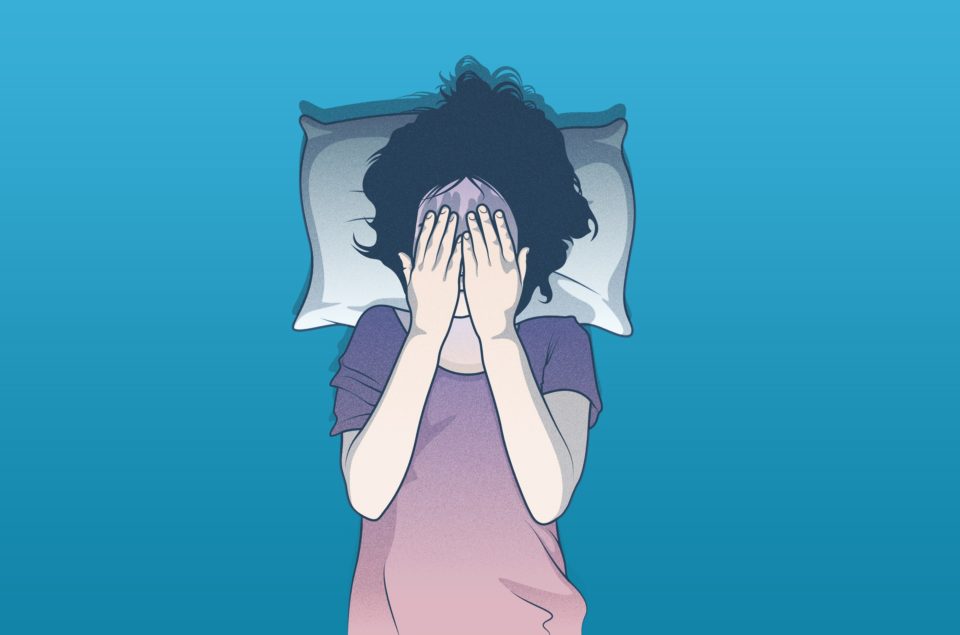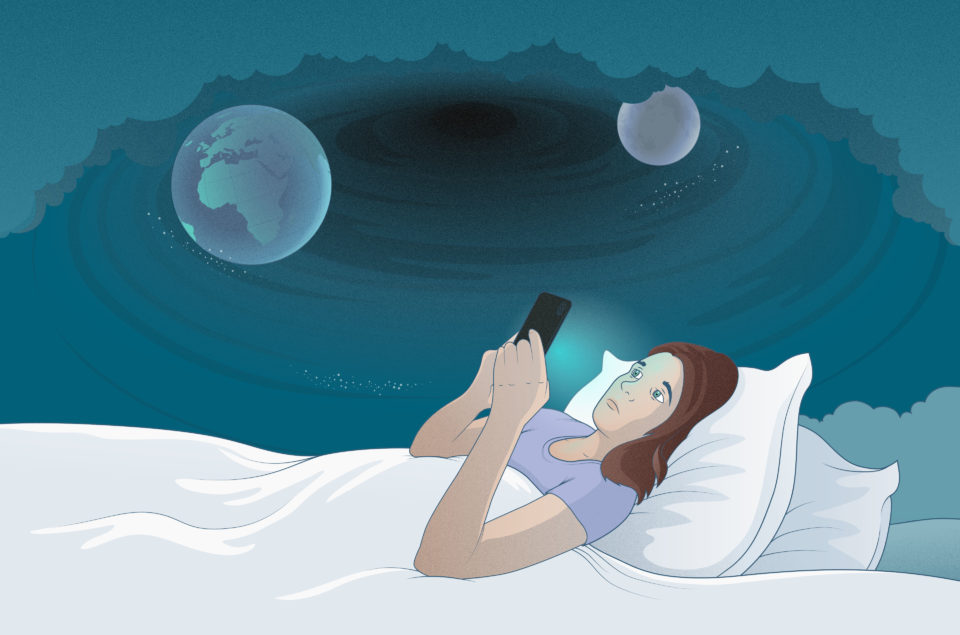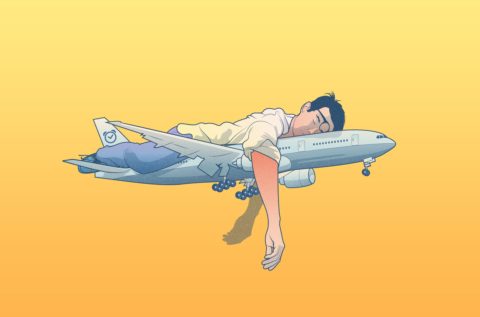Sleeplessness has both tormented and inspired artists through the centuries. Here’s a selection of their work.
Considered to be one of the greatest writers of all time, French author Marcel Proust suffered from chronic insomnia. His seven-volume novel In Search of Lost Time starts with a description of the narrator’s memories of sleeping and waking up at night. In one sequence, he opens his eyes, “to settle the shifting kaleidoscope of the darkness”.
Experiences of sleep – and not being able to sleep – continue to be explored as sources of inspiration for books, music and art. At the 2020 Grammy Awards, the singer Billie Eilish swept all four major categories to win Record of the Year, Song of the Year, Album of the Year and Best New Artist for her album When We All Fall Asleep, Where Do We Go? which was directly inspired by her own sleep problems, including sleep paralysis and night terrors.
One of the most commonly reported sleep disorders, insomnia is central to many works of art; a number of history’s most notable artists, musicians and writers have described their battles with sleeplessness. Many of these works are colored by the pain and anxiousness that comes when one of our most basic human functions – sleep – doesn’t work. In others, exhaustion breaks down mental boundaries and opens up new ways of thinking.
Here is a short selection of books, films and music that portray or have been inspired by insomnia
Music
- The Beatles: “I’m So Tired” (1968)
“I’m So Tired” is a song from the 1968 double album The Beatles (also known as “the White Album”). John Lennon wrote the song during a meditation retreat in Rishikesh, India, where he was experiencing insomnia due to an intense daily meditation routine. In a weary voice, he sings about swirling thoughts and missing Yoko Ono. Lennon has said that it was one his own favorite Beatles’ tracks.
- Fela Kuti: “Trouble Sleep Yanga Wake Am” (1972)
Pioneer of the Afrobeat genre, Nigerian Fela Kuti is one of Africa’s most well-known musicians and singers. “Trouble Sleep Yanga Wake Am” was released at the height of his career. The song’s hypnotic brass-filled instrumental introduction gradually leads into a meandering verse that describes scenes of different people (and a cat) who can’t sleep: one is looking for work, another is in debt, a third has to pay rent. Finally, when the cat falls asleep, the “rat go bite him tail.”
- The Go-Go’s: “You Can’t Walk in Your Sleep (If You Can’t Sleep)” (1981)
The early-1980’s seminal new-wave band The Go-Go’s recorded a number of songs about sleep and sleeplessness, including “You Can’t Walk in Your Sleep (If You Can’t Sleep)”, reportedly inspired by guitarist and singer Jane Wiedlin’s real-life problems with insomnia.
Film
- Taxi Driver (1976)
In the Oscar-winning neo-noir film Taxi Driver, Robert De Niro plays a lonely and chronically sleep-deprived taxi driver who drives around New York at night. “Twelve hours of work and I still can’t sleep…” De Niro grumbles in the opening monologue, a prelude to his character’s worsening mental health.
- Fight Club (1999)
Fight Club (based on the 1996 novel of the same name) was one of the defining films of the 1990s. The book’s author Chuck Palahniuk said he came up with the story when he was wandering around Reno, Nevada, with no money and nowhere to stay: “At night I wandered sleepless through the empty all-night casinos and restaurants, exhausted, delirious, and inventing a story about a man who thought he had insomnia but was actually living a double life.”
- Insomnia (1997 and 2002)
First shot as a Norwegian thriller, Insomnia was later released as a Hollywood remake starring Al Pacino. The original film centers on a police detective investigating a murder in a town located above the Arctic Circle. When the investigator shoots a man by mistake, his guilt brings on insomnia – illustrated by the unyielding glare of the midnight sun.
Books
- Swann’s Way, Marcel Proust (1913)
Marcel Proust’s book Swann’s Way was the first of his seven-volume novel In Search of Lost Time. The narrator’s inability to sleep is a major theme in the book. The narrator recounts his fear of going to bed at night as a young boy with shimmering detail, describing how it starts to affect his relationship with his family and his view of the world.
- Sleep, Haruki Murakami
In the short story Sleep, which was originally published as part of the anthology The Elephant Vanishes, an unnamed Japanese housewife suddenly finds that she can no longer sleep. The story begins with the statement: “This is my seventeenth straight day without sleep.” At first, the narrator’s insomnia seems like a gift – but soon her days start bleeding into one another until she slowly loses her grip on everything around her.
- Insomniac Dreams: Experiments with Time by Vladimir Nabokov, ed. by Gennady Barabtarlo (2017)
Russian-American novelist Vladimir Nabokov was a lifelong insomniac. In 1964, he began an experiment of writing down his dreams to see if he could use them to tell the future. At the time, he was barely sleeping at all, but the result are vibrant vignettes into the mysterious subconscious. He dreams, for example, that the solution to the supreme mystery is that “the cosmos with all its galaxies is a blue drop in the hollow of my palm.”









